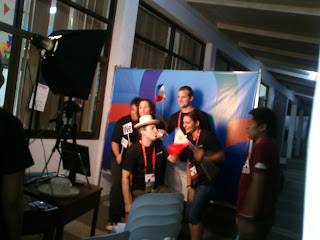Environment : Ubuntu 12.04 (Linux)
I was going to open the phpMyAdmin console after starting XAMPP server 1.8.1 where i was greeted with the following error message :D
Eventhough i was first confused, resolving this issue was not hard after having some web search. This is how to get it done.
As the error message informs first we have to find "httpd-xampp.conf" file. It is in the /opt/lampp/etc/extra directory. Open this file with root permission as we are going to edit it.
Note: /opt/lampp is the installation folder where i installed my XAMPP distribution. If you have installed it in another location go there and get into LAMPP_HOME/etc/extra directory.
Find the following section in the file.
The error can be fixed by adding the following line in within the <Directory> tags.
Require all granted
So the edited section would look like,
Now click on phpMyAdmin link, the console will be opened now.
I was going to open the phpMyAdmin console after starting XAMPP server 1.8.1 where i was greeted with the following error message :D
Eventhough i was first confused, resolving this issue was not hard after having some web search. This is how to get it done.
As the error message informs first we have to find "httpd-xampp.conf" file. It is in the /opt/lampp/etc/extra directory. Open this file with root permission as we are going to edit it.
Note: /opt/lampp is the installation folder where i installed my XAMPP distribution. If you have installed it in another location go there and get into LAMPP_HOME/etc/extra directory.
Find the following section in the file.
<Directory "/opt/lampp/phpmyadmin">
AllowOverride AuthConfig Limit
Order allow,deny
Allow from all
</Directory>The error can be fixed by adding the following line in within the <Directory> tags.
Require all granted
So the edited section would look like,
<Directory "/opt/lampp/phpmyadmin">
AllowOverride AuthConfig Limit
Order allow,deny
Allow from all
Require all granted
</Directory>Now click on phpMyAdmin link, the console will be opened now.

























